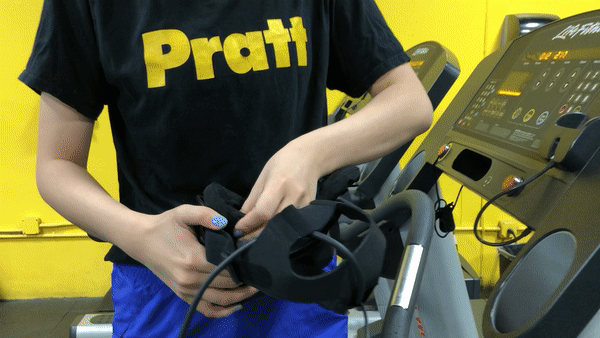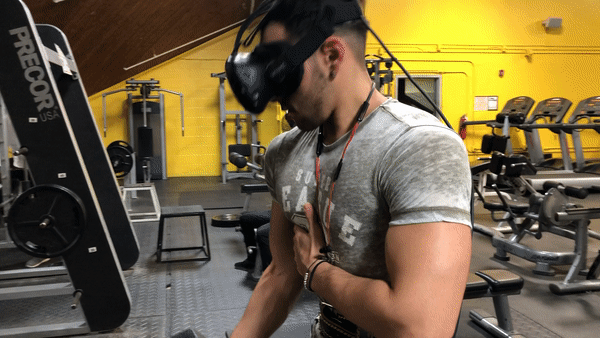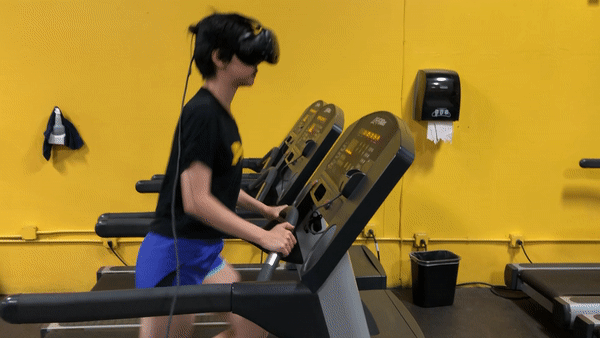VR Sweat Protection
A collaboration with NASA Technology Collaboration Center
Team -Kathy Wang, Stephanie Chen, Joseph Lee

Problem
NASA has been incorporating Virtual Reality ( VR) technology into astronauts’ training. The VR headset NASA is using, HTC Vive Pro, is not specifically designed for some training contexts. Astronauts sweat on their faces and heads during physical fitness training. Humidity builds up in the headset and damages the circuitry rendering the headset inoperable.
Objective
Create a human-centered design solution for HTC Vive Pro VR headset to mitigate sweat and to protect the headset from water damage. This VR accessory will create a waterproof barrier for the headset, minimizing the amount of possible sweat generated during exercise, absorb any moisture from the user and eliminate damage to the equipment. Sweat Protection device should be easy to clean.
Research
-
We looked at different waterproof and breathable fabric examples. The traditional Gore-Tex construction is laminated. We were inspired by this multi-layer system. So we also designed our prototype in layers.
-
We found this wood pulp based fabric. Tencel is 50% more absorbent than cotton. It’s also anti-bacterial
-
We researched on sweat production on the face. People sweat the most on their cheeks, foreheads, and nose. A person can produce a maximum amount of 126 mL of sweat on their face during exercise. So in all of our later fabric testing and prototype testing, we were using 150 mL of water.



Traditional Gore-Tex Construction
Cotton and Tencel Fiber Comparison
Heat Maps of Face
Fabric Testings

Testing fabric samples with a garment steamer
Testing Result
In the first round of testing, we found out Tencel is the most absorbent fabric and spacer fabric dries the fastest. The result of the second round shows that when layers on Tencel are on top of spacer fabric, the layers absorb the most amount of water. In the third round of testing, we found out that Athletic Sports Mesh is the best option for the layer that’s going to wrap around our absorbent layers and it touches the user's face.
Setup and Procedure
We did three rounds of fabric testing before building our first prototypes. We compared Tencel, spacer fabric and cotton in the first rounds. After eliminating cotton, in the second round, we tested for the different layers of Tencel and spacer fabric in different combinations. In the third round, we tested performance fabric, the layer that’s going to wrap around our absorbent layers and it touches the users face.
All fabric sample testing follows the same procedure. We wanted to make sure the fabric was tested vertically. Fabric swatches were pinned on the wall with 10 layers of tissue behind each. We were measuring which layer of tissue does the water permeate through.
A garment steamer with 150ml of water was used on each sample. A person can produce a maximum amount of 126 mL of sweat on their face when exercising for an hour; if the sample can absorb 150ml of water, it’s definitely going to absorb all the sweat. The garment steamer is pressed against the fabric to mimic the way that the headset compresses on the user’s face.

Testing Round One
Testing Round Two
Testing Round Three
Prototype Idea
The first prototype was built based on our research and testing. The first layer that's closest to the user's face is an outer shell that wicks moisture away from the skin. The absorbent layer has 7 layers to Tencel and after that are 3 layers of spacer fabric that acts as a moisture reservoir. And after that is a layer of polyester that acts as an impermeable barrier. At last, there's the Velcro layer that's used for attaching the pad to the VR headset.




Exploded Three-Quarter View Rendering
Exploded Front View Rendering
Top View Rendering
Three-Quarter View Rendering
First Prototype and Testing
We constructed the first prototype for testing. We used the same testing procedure. The result is very good. As the tissue in the last photo shows, the part that's covered by our prototype is completely dry.

Three Quarter View

Back View

Testing Setup

Testing Result
Process

Pattern Making
Our first prototype shows that our design is waterproof and can protect the VR headset from water damage. We worked on improving the construction of the product and the user experience. We tried to move the seam away from the user's face so it's more comfortable to wear.


Heading 6
Laser Cutting Fabric Layers
Fitting Parts Together

Fitting Parts Together
Final Model

Final Models


Final Model Front and Back
Final Model Attaching on VR
User Testing

Attaching to the Headset

10 Minutes Lifting

30 Minutes on Treadmill

20 Minutes Squats
